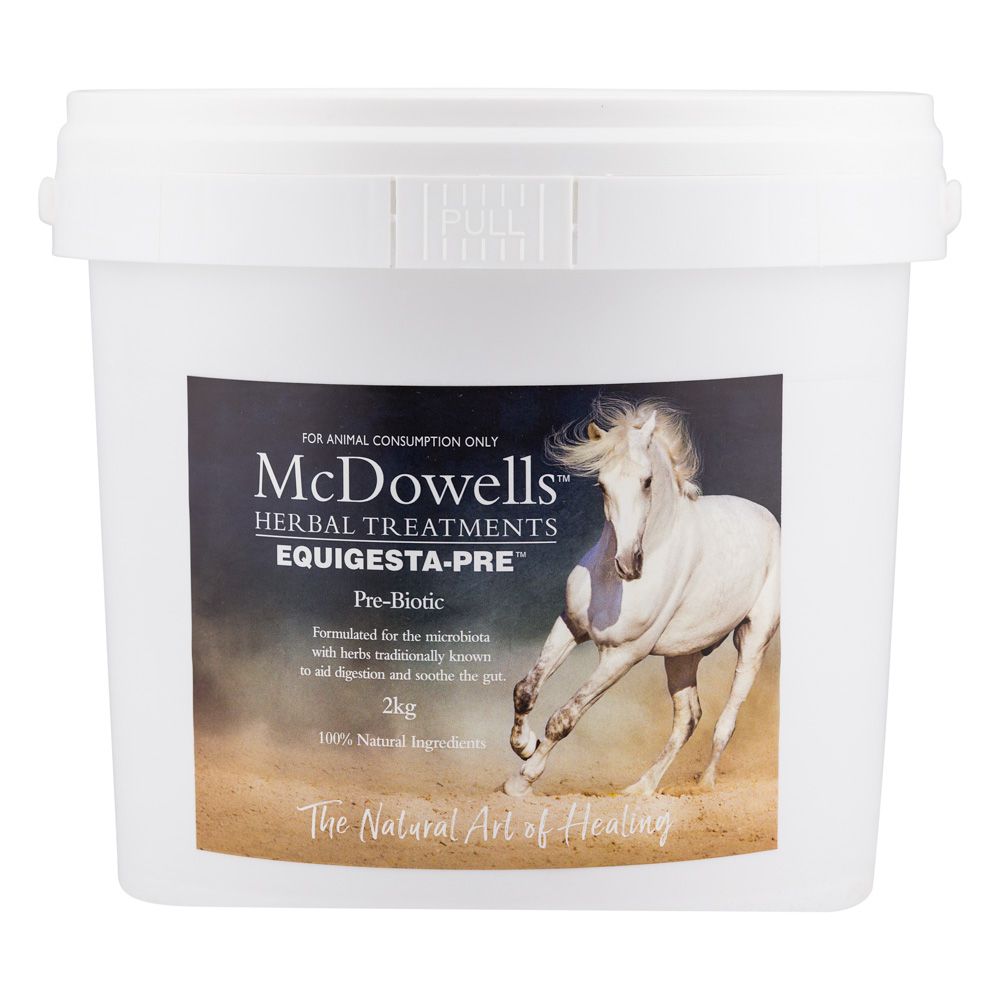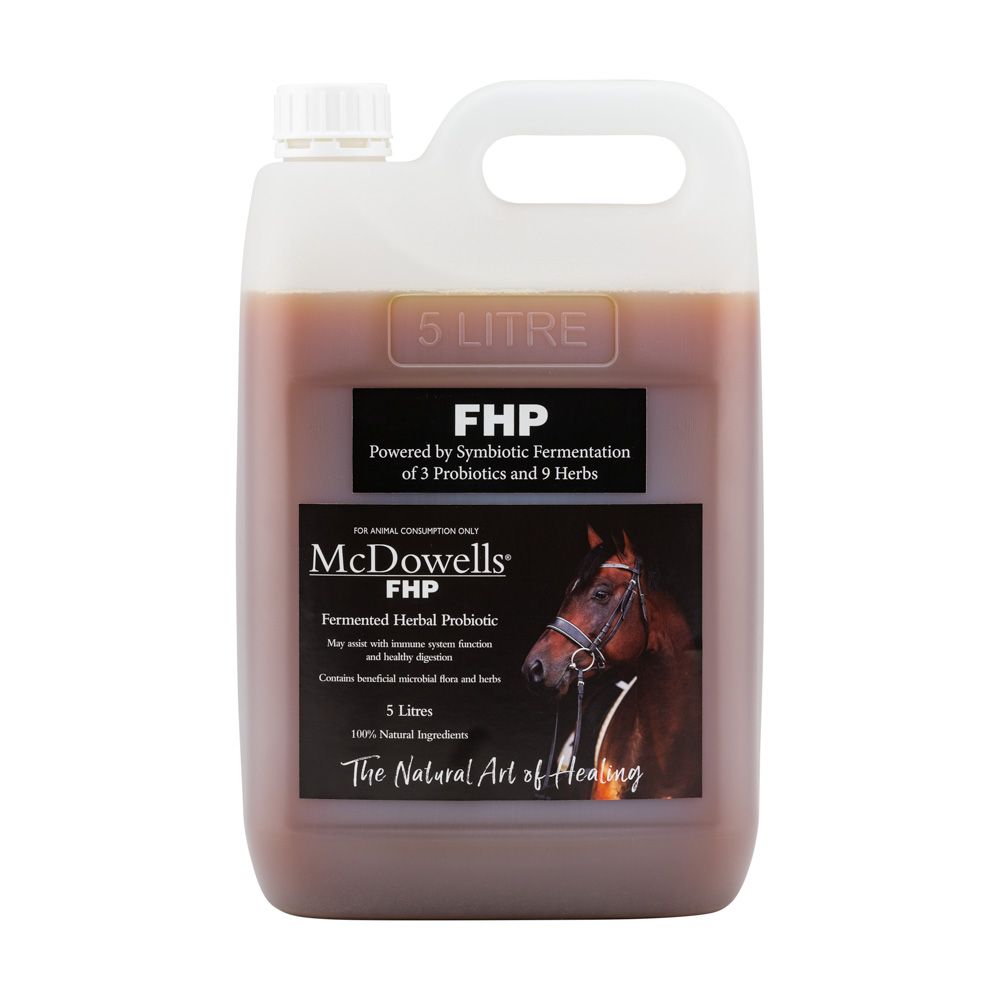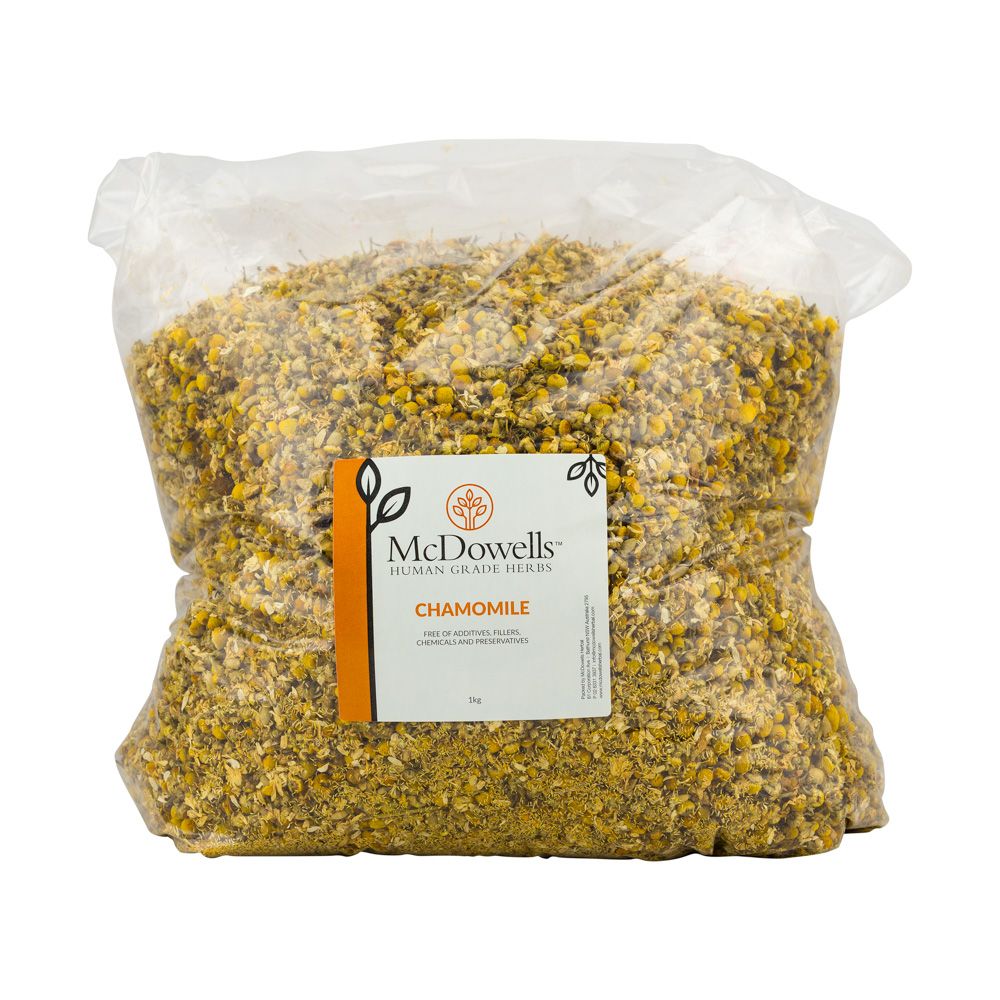Over the last twenty five years, the understanding of equine ulcers has changed several times. We first have to look at these changes before we can go ahead and effectively treat ulcers in our horses. Many of us had not even believed that horses suffered from this condition until recently. Maybe they didn't?
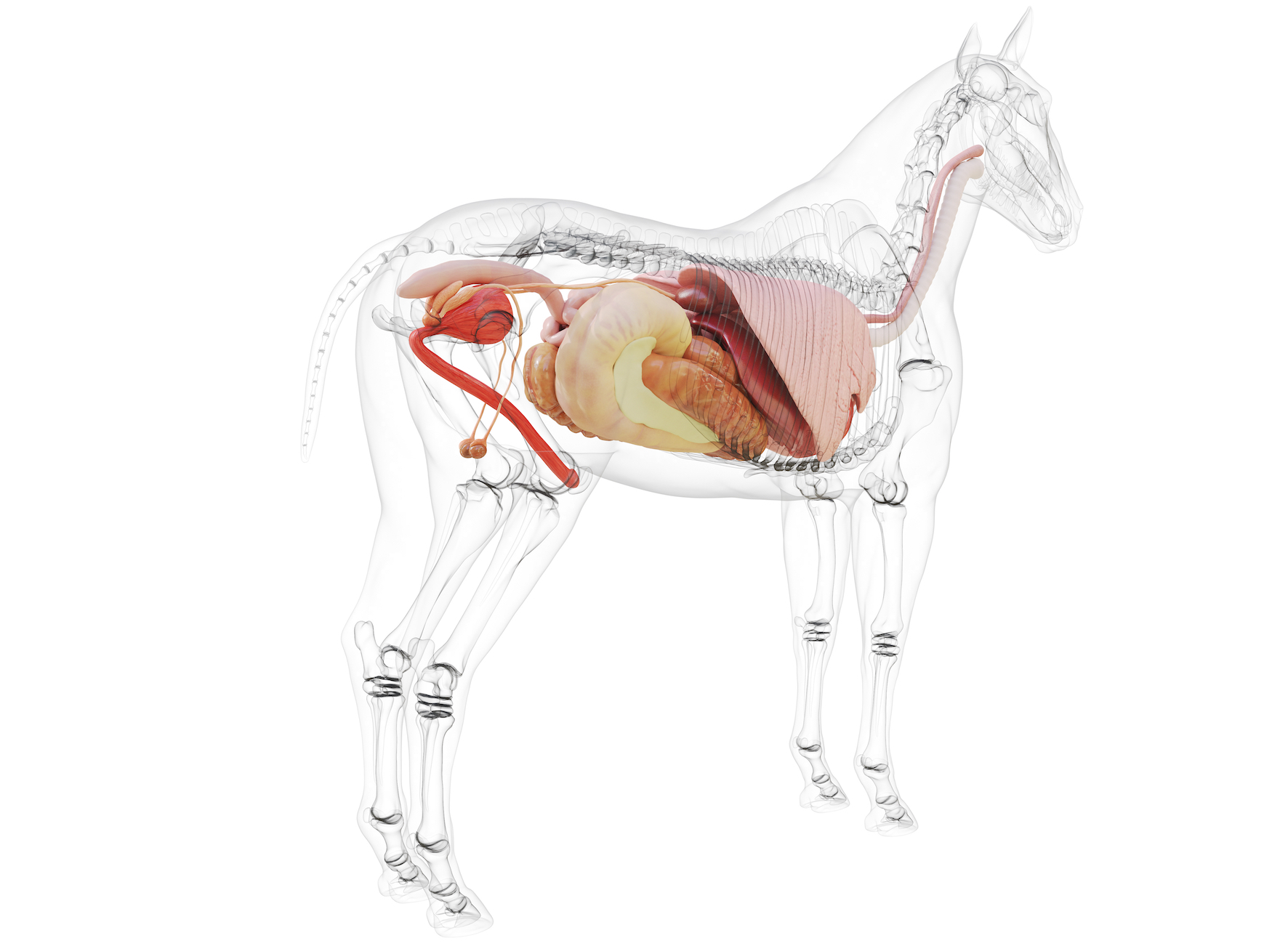
Let's go back for a moment and look at the gut of the horse and then at the things we call 'ulcers'....
What is the gut?
The gut of the horse (just like humans) is a tube, which is more or less muscular and diversified at different parts according to its task at each particular stage.
In the stomach, for example, the tube forms a heavily muscled pocket which works rhythmically to move the contents around and around like in a washing machine. This allows the stomach acid to break up the carbohydrate content of the feed and mix in enough liquid to facilitate the transport and operations which follow. The stomach is provided with an acid proof lining.
In the duodenum the partly digested product (from the stomach) is exposed to bile from the liver. This breaks down fats and oils in the diet. There is no churning involved in the duodenum and it is not particularly muscular. Its protective mucus lining is not acid proof as in the stomach but it is alkaline proof, because bile is alkaline.
The large intestine is another muscular tube, which moves the depleted and fibrous remains of the diet along and reclaims much of the liquid from the chyme, which is the name given to the liquid mix flowing through the small intestine. In the end, the lower bowel collects faecal matter ready for discharge and at intervals expels its load.
We all know what a good healthy dropping looks, and smells, like!
The lining of the gut
At all stages, from the inside of the mouth to the anus, the tube is lined with mucus producing cells which are specialized to protect the walls of the tube from erosion. The tube needs protecting from the acids (as in stomach acid) the alkalis (as in bile) and the other chemical reactions, which take place down its whole length.
This protective mechanism works by the cells producing fluid continually so that corrosive chemicals at the surface of the lining are washed away constantly and are therefore unable to attack the walls of the tube itself.
In the stomach where the strongest and most corrosive chemical (Hydrochloric Acid) is found, protection from acid attack also depends on the regular muscular contractions which further stimulate the mucus cells to produce a great deal more fluid than they would without such movement.
What is a stomach ulcer?
A stomach ulcer is an area where the membrane comprised of mucus producing cells has been eroded away and the acid has been able to attack the muscular wall beneath. This causes pain and inflammation and can cause bleeding into the stomach which is debilitating and potentially life threatening.
Medical options
In humans ulcers there has been an evolution of treatments for acidity in the stomach and for ulcers. Historically they have revolved around five different approaches.
Early medicine treated ulcers by using herbs and other substances, which soothed the lining of the stomach and protected it. Other herbs which relaxed the muscular tension which was seen to be partly responsible for the tension, which we will see, is involved in all ulcers, were commonly used along with antacid substances which absorbed the excess acids.
Western medicine up until the 1960's concentrated mostly on antacid therapy to reduce acid levels, hopefully allowing the mucus lining in the stomach to heal on its own.
Then came surgical intervention where acid secreting ducts were sealed to try to reduce the amount of acid, which could be secreted into the stomach. Around about the same time, surgery was attempting to remove severely ulcerated parts of the stomach as a last resort treatment.
Following this came drug intervention with a class of drugs, which inhibited acid secretions, and these are very popular at present.
More recently still, there was a move to use aggressive antibiotic therapy to destroy bacterium commonly found in ulcerated stomachs on the grounds that this bacterium caused the problem in the first place.
The causes of ulcers
Ulcers were always seen to be as a result of stress in humans. Traditionally they were also much more common in younger people, especially males. This can be understood by the custom of challenging males early in their adulthood to perform, often out of their depth, and poorly supported. The classic 20th century human ulcer sufferer was a male in his 20's, in a job which was demanding and stressful, and for which he was not really all that well prepared insofar as he had few emotional tools and/or emotional support to help him cope.
When someone is under such tension a common response is to carry some physical tension in the muscles of the torso, which includes;
- The heart (which can cause irregular beats);
- The back muscles (which can cause back tension and pain) and;
- The stomach (which can interfere with the normal relaxed rhythmic muscular movements essential to digestion).
When the stomach is prevented from carrying out its usual movement and stimulating the mucus producing cells lining the inner surface from functioning normally, the acid within the stomach is able to irritate this mucus lining. Ultimately the irritation will corrode through the lining and begin to attack the muscular wall itself producing a sore just like an ulcer on the skin. A bleeding ulcer is simply one in which the erosion has gotten deep enough to break into a blood vessel which then can flow directly into the stomach.
The introduction of aspirin began the era of chemically induced ulceration in the stomach of humans. Aspirin and its derivatives attack the lining of the stomach and thin the blood, which allows an ulcerating situation to develop and progress more rapidly through to a bleeding ulcer.
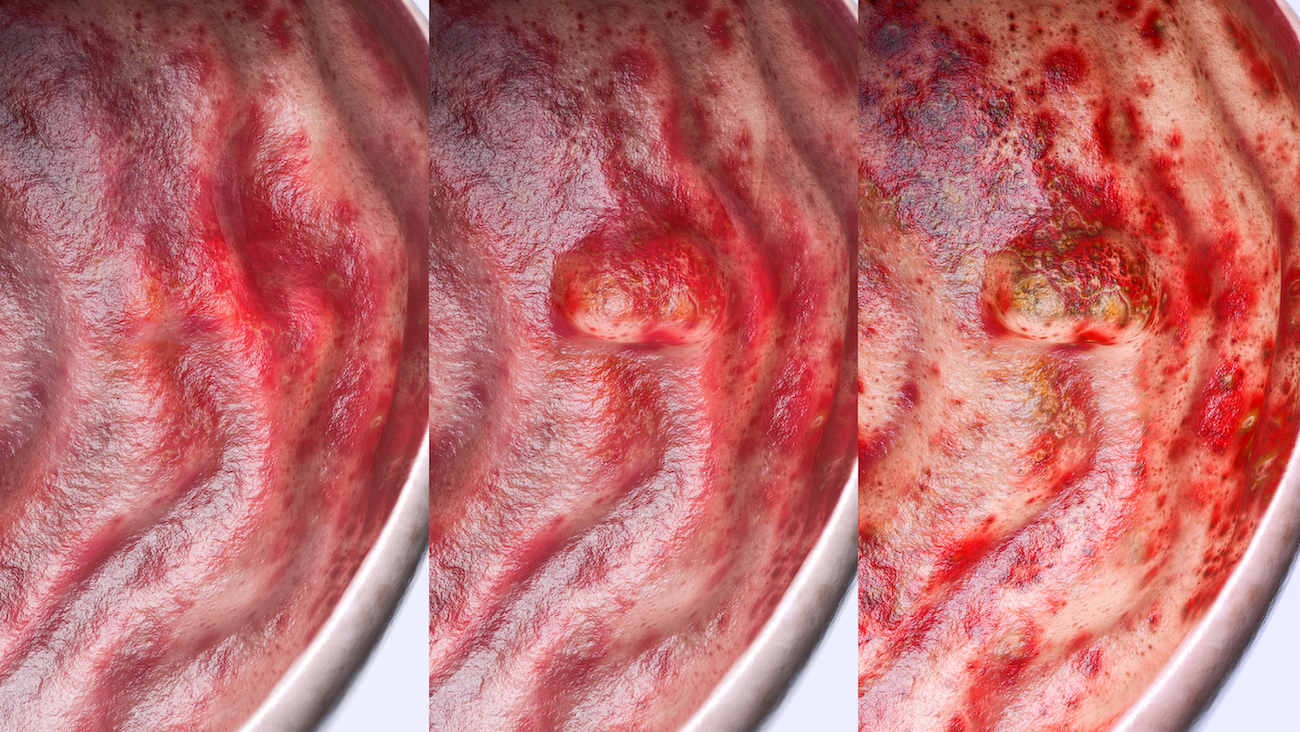
Image showing gut ulceration
The equine ulcer
Ulcers in a horse's stomach are exactly the same as those found in human stomachs. They are now identified using gastroscopic technology, which is now widely available. Very recently there has been a dramatic increase in the identification of equine ulcers and the marketing of chemical treatment options to 'cure' or to prevent them.
What are not being considered widely yet, are the reasons behind the upsurge of equine ulcers.
I would suggest that they are much more common nowadays than ever before. Also that maybe they were extremely rare or even completely unknown before we started to interfere with so much of the horses natural environment and natural needs.
In the modern racing stable for example we have the following common situations and circumstances;
These herd animals are isolated from physical contact with other horses. They are stabled and not allowed to run freely around on the grounds that they are too valuable to run the risk of hurting themselves.
The modern racehorse has been tested and found to be suffering from high levels of stress much of the time. This reaches its peak at 4.30 am or whatever time the lights are first turned on in the morning. We must conclude that this is because the animal doesn't know what will happen to it on any particular day. Maybe it's first experience of the day will be to be given a large injection in the neck or maybe a gastroscopic inspection down its nose. Maybe it is to be shipped off to a hospital to be drugged and operated upon. Maybe it will get one hour of track work and spend the rest of the day locked up. Maybe it is Melbourne Cup day. What has been demonstrated is that their stress levels don't abate until they know more or less what is in store for them for the day. This is a far cry from their life in the wild or for the first three thousand years of their domestication.
The modern competition horse also is likely to have quite a lot of exposure to phenylbutazone (Bute) which is routinely used to treat pain and inflammation. Although its administration is meant to be only under Veterinary supervision it has become commonplace to find owners and trainers administering this substance too frequently and in larger than recommended amounts.
What we have here then are ideal conditions to allow equine stomach ulcers to flourish which may include stress in the case isolation, unpredictable situations and exposure to chemical substances which weaken the stomach lining and can cause bleeding. These conditions are almost entirely due to our interference with the natural rhythms and routines of the animals and to our substance abuse.
I would suggest that under these circumstances it would be surprising if our racehorses did not suffer from ulcers nowadays.
How can we prevent ulcers?
This is easy. All we need to do is to be aware of the factors, which are disposing our equine partners toward this condition, and to do something about some of them.
- We don't need to be in an ideal world with our horses running free in nature but we should allow them to mix freely with their own kind and to have a degree of freedom outside the stabled environment.
- We can structure daily programs which are predictable and contain positive elements so the animals have things to look forward to which are pleasurable.
- We can minimise the exposure to exotic chemicals and in particular Phenylbutazone.
- We can provide the herb chamomile to our animals on a daily basis to support the normal relaxed functioning of the gut.
- We can treat them for shock by providing caring and calm environments when we are exposing them to traumatic experiences and by using Rescue Remedy or specific herbal nervous system tonics matched to the specific situations.
What we must understand is that we cannot prevent ulcers safely by using drugs which mostly function by reducing the production of acid for the gut. We may be able to reduce acid levels but one must ask how is the animal going to be able to carry out normal digestion of carbohydrates in an environment which is low in acid. It is short sighted in the extreme, to imagine that this approach can support good health and peak performance.
Can we cure ulcers?
If faced with an animal with moderate to severe ulceration we must prepare specific herbal medications to suit the situation and I advise you to seek professional health. What is provided will depend on the nervous disposition of the particular animal and the extent of the damage to date and the affects of this damage on other aspects of their overall metabolism.
This is not to say that these products are a 'cure' for ulcers, it is just that they will assist in the normal healthy recovery of the damaged lining. They will also assist in relaxing the stomach and improving the normal rhythmic action necessary both for digestion and optimal fluid secretion.
If you look at the whole situation (from a holistic view), you will recognise that the cure also involves addressing the other factors involved in providing a situation in which ulcers can happen, or are even inevitable.
If some of these factors are alleviated or reduced then an ulcer will not be able to form and an existing ulcer will heal.
McDowells Products
Equigesta-Pre
Equigesta-Pre contains a combination of pure herbal powders, brewer's yeast and bentonite clay. Traditionally this combination has been used to aid and promote beneficial intestinal microorganisms. Our unique blend can be used daily as an equine prebiotic to support and stimulate the growth and activity of good bacteria in the digestive system.
Equigesta-Pre contains slippery elm bark powder which, when mixed with cold chamomile tea, will provide a mucilaginous lining to the gut. This will protect the mucosa and allow it to heal while allowing all normal secretions to penetrate and not interfering with normal digestive processes.
FHP
FHP is a fermented herbal probiotic. It is used to assist with immune system function and healthy digestion as it contains beneficial microbial flora; Lactobacillus casei, Lactobacillus plantarum, Saccharomyces cerevisiae, and nine herbs.
FHP uses symbiotic fermentation - a process where multiple organisms (yeasts, acetic acid bacteria, lactic acid bacteria and others) interact to allow the active compounds from herbs to express their true biological nature when digested. Fermented botanicals offer a broad spectrum of nutrients which help to create a favourable environment in the animal’s gut that contributes to their overall health via the microbiota.
It contains anise for indigestion and bloating, birch leaves for rheumatic conditions, caraway as an appetite stimulant and aids stress colic due to its anti-spasmodic action in the gut, fennel to support pancreatic function and is known to regulate blood sugar and appetite, goldenrod has numerous respiratory system benefits and is an effective expectorant, yarrow to aid marrow health and improve blood quality, marshmallow Root helps to soothe the mucosa, peppermint to relieve bloating and rosemary to improve circulation and improve brain health
Chamomile flowers
Chamomile flowers are an optional extra. The treatment could include regular feeding of whole chamomile flowers and tea at a dose rate of a third of a cup of chamomile flowers twice daily made into a tea with boiling water and left to go cold. This tea can be used, without straining, to dampen down any other feed morning and evening.

